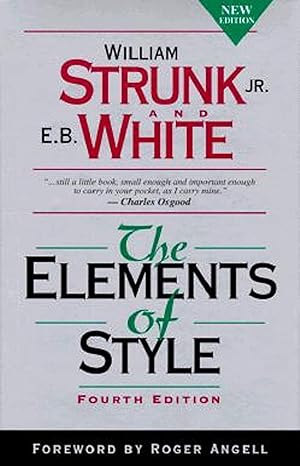Even the most experienced writers can make subtle mistakes that slip through unnoticed. These difficult-to-spot writing mistakes may seem harmless, but they can weaken your message, confuse readers, and reduce your credibility. In this comprehensive guide, we'll explore the top 10 most difficult-to-spot writing mistakes—and provide practical solutions to fix them. Use our Grammar Checker to catch many of these errors automatically while you write.
Unlike obvious errors such as misspelled words or missing punctuation, these subtle grammar errors and style issues often evade detection during quick proofreading sessions. They require a trained eye and careful attention to detail to identify and correct. Our Text Analyzer can help you identify problematic sentence structures and improve overall readability while reviewing for these subtle issues.
Table of Contents
- 1. Misplaced Modifiers in Professional Writing
- 2. Dangling Participles in Complex Sentences
- 3. Subject-Verb Agreement Mistakes Writers Miss
- 4. Ambiguous Pronoun References in Writing
- 5. Parallel Structure Writing Mistakes
- 6. Comma Splices and Run-on Sentence Errors
- 7. Incorrect Word Usage and Homophone Confusion
- 8. Passive Voice Overuse in Business Writing
- 9. Inconsistent Tense Shifts in Narratives
- 10. Redundancy and Wordiness Writing Mistakes
- Advanced Strategies to Catch Difficult Writing Mistakes
- Frequently Asked Questions About Hidden Writing Mistakes
- Conclusion: Master Hidden Writing Mistakes with Confidence
1. Misplaced Modifiers in Professional Writing
A misplaced modifier is a word, phrase, or clause placed too far from the word it's supposed to modify, creating confusion or unintended meaning. This writing mistake is particularly difficult to spot because the sentence might still make grammatical sense, even though the meaning is unclear or absurd. When editing for clarity, use our Sentence Counter to break down complex sentences and examine each element carefully.
Example (Wrong): She nearly drove her kids to school every day.
Corrected: She drove her kids to school nearly every day.
The first example suggests she almost drove (but didn't), while the correction clarifies that she drove almost daily. Misplaced modifiers often involve adverbs like "nearly," "only," "almost," and "just."
Detection Tip: Read your sentences carefully and ask yourself: "What is this modifier actually describing?" Place descriptive words as close as possible to the word they modify. Use our Text Editor to rearrange sentence elements and test different structures for clarity.
The Purdue Online Writing Lab advises anchoring modifiers directly beside the words they describe, reinforcing why meticulous sentence review eliminates this confusing writing mistake.

Color-coded flags help writers systematically mark different types of errors, making the editing process more organized and thorough.
🏷️ Systematic Error Marking
Post-it Flags Combo Pack (4 Dispensers)
320 Total Flags • Assorted Colors • On-The-Go Dispensers • Amazon's Choice
📝 Professional Editing System: Color-code different error types • Mark misplaced modifiers • Organize revision process • Non-permanent marking • Easy removal
Create a systematic approach to identifying and fixing writing mistakes with color-coded organization
2. Dangling Participles in Complex Sentences
A dangling participle occurs when a participial phrase (usually beginning with an -ing or -ed word) doesn't clearly refer to the correct noun in the sentence. This creates awkward or illogical meanings that can confuse readers and undermine your writing clarity. Analyze your sentence structure with our Paragraph Counter to ensure each paragraph maintains clear subject-verb relationships throughout.
Example (Wrong): Walking to the store, the rain started falling.
Corrected: Walking to the store, I noticed the rain started falling.
In the incorrect example, it appears that the rain is walking to the store. The correction makes it clear that "I" am the one walking.
Detection Tip: After writing a participial phrase, immediately check if the subject of your main clause is the one performing the action described in the phrase.

A comprehensive grammar reference helps writers identify and correct subtle grammatical errors like dangling participles.
📚 Grammar Reference
The Blue Book of Grammar and Punctuation
12th Edition • Easy-to-Use Rules • Real-World Examples • Writing Practice
📝 Writing Excellence: Master grammar rules • Fix common mistakes • Professional writing standards • Clear explanations • Practice exercises
Master grammar fundamentals and avoid common writing mistakes with this comprehensive guide
3. Subject-Verb Agreement Mistakes Writers Miss
Subject-verb agreement errors occur when singular subjects are paired with plural verbs, or vice versa. While basic cases are easy to catch, complex sentences with multiple clauses, collective nouns, or inverted word order make these errors particularly difficult to spot. Our Grammar Checker specifically identifies subject-verb agreement issues, especially in complex sentences where the subject and verb are separated by lengthy phrases.
Example (Wrong): The team of developers are working on the project.
Corrected: The team of developers is working on the project.
"Team" is a collective noun that takes a singular verb, even though it refers to multiple people. Other tricky cases include phrases like "along with," "as well as," and "in addition to," which don't change the subject's number.
Detection Tip: Identify the true subject of the sentence by removing prepositional phrases and focus on whether that subject is singular or plural.
The University of Wisconsin Writing Center recommends isolating the real subject before selecting a verb, a practice that dramatically reduces hidden subject-verb agreement mistakes in professional documents.

High-definition document cameras enable detailed examination of text structures, making subject-verb agreement errors easier to spot and correct.
📹 Visual Text Analysis
IPEVO V4K Ultra HD Document Camera
8MP Ultra HD • Mac/Windows/Chromebook • Live Demo • Web Conferencing
🔍 Enhanced Grammar Review: Ultra HD text magnification • Live document sharing • Remote teaching capability • Multi-platform compatibility • Professional editing sessions
Magnify and analyze text structures for detailed grammar checking and collaborative editing

Subject-verb agreement errors are among the most common subtle mistakes in writing.
4. Ambiguous Pronoun References in Writing
Ambiguous pronoun references occur when it's unclear which noun a pronoun refers to. This subtle grammar error can make your writing confusing and force readers to re-read sentences to understand your meaning. Use our Word Counter to track pronoun usage and ensure each pronoun has a clear, unambiguous antecedent within a reasonable word distance.
Example (Wrong): When John talked to Mark, he seemed confused.
Corrected: When John talked to Mark, Mark seemed confused.
In the incorrect example, "he" could refer to either John or Mark. The correction eliminates this ambiguity by explicitly naming the confused person.
Detection Tip: Every time you use a pronoun, trace it back to its antecedent. If there's any doubt about which noun it refers to, replace the pronoun with the specific noun.

A comprehensive dictionary helps writers choose precise words and avoid ambiguous pronoun references by understanding exact meanings and usage.
📖 Word Precision
Merriam-Webster Dictionary
Newest Edition • 70,000+ Definitions • Usage Examples • Etymology
📚 Clarity & Precision: Resolve word confusion • Clear pronoun usage • Precise definitions • Professional writing • Academic reference
Eliminate ambiguity in your writing with precise word definitions and proper usage guidance
5. Parallel Structure Writing Mistakes
Parallel structure, or parallelism, requires that elements in a series follow the same grammatical pattern. Violations of parallel structure create awkward-sounding sentences that can disrupt the flow of your writing. Analyze your text structure and identify parallel elements using our Text Analyzer to ensure consistent grammatical patterns throughout your writing.
Example (Wrong): She likes reading, writing, and to paint.
Corrected: She likes reading, writing, and painting.
The error mixes gerunds (reading, writing) with an infinitive (to paint). The correction maintains parallelism by using gerunds throughout.
Detection Tip: When listing items or actions, ensure all elements follow the same grammatical form—all nouns, all verbs in the same tense, or all phrases with the same structure.

Visual timers help writers maintain focus during structured editing sessions, ensuring thorough review of parallel structure and other grammatical elements.
⏰ Focused Writing Sessions
LIORQUE 60 Minute Visual Timer
Visual Countdown • Pizza Pattern Design • Silent Operation • Batteries Included
📝 Pomodoro Editing: 25-minute focused sessions • Visual progress tracking • Silent operation for concentration • Perfect for systematic grammar review
Structure your editing time with visual cues for more productive writing sessions

Professional editing involves catching subtle errors that automated tools often miss.
6. Comma Splices and Run-on Sentence Errors
Comma splices occur when two independent clauses are incorrectly joined with only a comma. Run-on sentences happen when independent clauses are joined without proper punctuation. These errors are subtle because they often occur in otherwise well-written passages. Monitor your sentence length and complexity with our Sentence Counter to identify potentially problematic sentence structures that may contain comma splices or run-on issues.
Example (Wrong): The project was challenging, it taught us valuable lessons.
Corrected: The project was challenging, but it taught us valuable lessons.
The correction adds a coordinating conjunction ("but") to properly connect the two independent clauses. Other solutions include using a semicolon, period, or restructuring the sentence.
Detection Tip: Read your sentences aloud. If you naturally pause where there's only a comma between two complete thoughts, you likely have a comma splice.

Red pens are the classic editing tool for marking comma splices, run-on sentences, and other grammatical errors during the revision process.
Classic Editing Tools
Think2 Retractable Red Gel Pens (24 Pack)
Fine Point 0.5mm • Comfort Grip • Red Ink • Rollerball Design
📝 Professional Editing: Mark comma splices • Highlight run-on sentences • Traditional red ink editing • Fine point precision • Comfortable grip for long sessions
Master the traditional art of editing with professional red pens designed for precision marking
7. Incorrect Word Usage and Homophone Confusion
Homophones are words that sound alike but have different meanings and spellings. Spell-check software won't catch these errors because the incorrect word is spelled correctly—it's just the wrong word for the context. Our advanced Grammar Checker goes beyond basic spell-checking to identify contextually incorrect word usage, including common homophone errors that standard tools miss.
Example (Wrong): The new policy will effect significant changes in our department.
Corrected: The new policy will affect significant changes in our department.
"Effect" is typically a noun meaning result, while "affect" is a verb meaning to influence. Other commonly confused pairs include "their/there/they're," "your/you're," and "its/it's."
Detection Tip: Create a personal list of word pairs you commonly confuse and double-check these words during editing. When in doubt, look up the definition.

Digital reading pens help writers and students identify correct word usage, pronunciation, and meaning - essential for avoiding homophone errors.
🖊️ Smart Writing Assistant
Scanmarker Air Reading Pen & Scanner
Translator Pen • Dyslexia Support • Mac/Windows/iOS/Android Compatible
📖 Advanced Text Recognition: Scan & translate text • Word pronunciation • Dyslexia support • Multi-platform compatibility • Professional writing aid
Enhance your word recognition and avoid homophone mistakes with smart scanning technology
8. Passive Voice Overuse in Business Writing
While passive voice isn't always incorrect, overusing it can make your writing weak, wordy, and unclear. The passive voice obscures who is performing the action and can make your writing less engaging. Use our Reading Time Calculator alongside passive voice detection to ensure your content maintains reader engagement while checking for excessive passive constructions.
Example (Passive): Mistakes were made during the presentation.
Active Version: The presenter made mistakes during the presentation.
The active version is more direct and takes responsibility for the action. However, passive voice can be appropriate when the actor is unknown, unimportant, or when you want to emphasize the receiver of the action.
Detection Tip: Look for forms of "to be" (is, was, were, been) followed by past participles. Ask yourself if the sentence would be stronger and clearer in active voice.
The University of North Carolina Writing Center notes that active voice reinforces accountability and clarity—two hallmarks of business writing that should guide your revisions.

Blue light blocking glasses help maintain focus and reduce eye strain during extended writing sessions, essential for thorough editing work.
👓 Extended Writing Comfort
TIJN Sleep Glasses (Blue Light Blocking)
99.9% Blue Green Light Blocking • Dual AR Coatings • Red Lens • Computer Gaming
👀 Enhanced Focus: Reduce eye strain • Maintain writing focus • Long editing sessions • Better sleep quality • Computer screen protection
Protect your eyes and maintain focus during intensive writing and editing work

Active voice creates more engaging and direct communication than passive constructions.
9. Inconsistent Tense Shifts in Narratives
Inconsistent tense shifts occur when writers unnecessarily change verb tenses within a sentence, paragraph, or section. While some tense changes are logical and necessary, unnecessary shifts can confuse readers about when events occurred. Maintain consistency throughout your document by using our Paragraph Counter to review each section and ensure tense consistency within and between paragraphs.
Example (Wrong): She walked to the store and buys groceries for dinner.
Corrected: She walked to the store and bought groceries for dinner.
The correction maintains past tense throughout the sentence. Both actions happened in the past, so both verbs should reflect this timeline.
Detection Tip: Read through your writing and identify the primary tense you're using. Mark any tense changes and verify that each change is necessary and logical.

Style guides provide comprehensive rules for maintaining consistency in writing, including proper tense usage and transitions.
📖 Writing Consistency
The Chicago Manual of Style (17th Edition)
Professional Standard • Comprehensive Rules • Academic Writing • Editorial Guidelines
✍️ Professional Standards: Master tense consistency • Punctuation rules • Citation formats • Editorial guidelines • Academic writing standards
Master professional writing standards and maintain consistency throughout your work
10. Redundancy and Wordiness Writing Mistakes
Redundancy involves using words that repeat the same idea unnecessarily, while wordiness uses more words than needed to express a thought. These subtle writing issues can make your prose less impactful and may bore readers. Identify and eliminate redundant phrases using our comprehensive Word Counter to track word usage patterns and our Text Analyzer to identify overly complex or wordy sentences.
Example (Wordy): In my personal opinion, I believe that the meeting was completely unnecessary and a total waste of time.
Concise: The meeting was unnecessary.
The original version contains redundant phrases ("in my personal opinion, I believe") and unnecessary intensifiers ("completely," "total"). The concise version conveys the same meaning more powerfully.
Detection Tip: After writing, go through and challenge every word. Ask: "Does this word add meaningful information, or am I just filling space?"

Mechanical typewriter-style keyboards encourage more deliberate typing, naturally reducing wordiness and promoting concise writing habits.
⌨️ Deliberate Writing Tool
AULA F2088 Typewriter Style Mechanical Keyboard
Blue Switches • Rainbow LED Backlit • Removable Wrist Rest • Media Control Knob
✍️ Mindful Typing Experience: Mechanical feedback promotes deliberate word choice • Retro aesthetic inspires focused writing • Reduces typing speed for better editing • Tactile experience
Embrace deliberate writing with tactile feedback that naturally encourages concise, thoughtful composition
Advanced Strategies to Catch Difficult Writing Mistakes

Advanced proofreading techniques help writers catch even the most subtle errors.
Beyond the specific tips for each error type, here are comprehensive strategies for catching difficult-to-spot writing mistakes:

The Elements of Style remains the definitive guide for writers seeking to master grammar, style, and the art of clear communication.
📚 Writing Mastery
The Elements of Style (Fourth Edition)
Kindle Edition • Classic Writing Guide • Grammar & Style Rules • Clear Communication
✍️ Timeless Writing Wisdom: Master grammar rules • Spot common mistakes • Improve writing clarity • Professional writing standards • Strunk & White classic
Master the fundamentals of clear, effective writing with this timeless guide
- Read Aloud: Your ear often catches errors your eyes miss. Awkward phrasing, run-on sentences, and unclear pronoun references become obvious when spoken.
- Take Breaks: Step away from your writing for a few hours or days. Fresh eyes spot errors that familiarity obscures.
- Print It Out: Reading on paper engages different cognitive processes than screen reading and can reveal hidden errors.
- Read Backwards: Start with the last sentence and work backward. This technique helps you focus on individual sentences rather than content flow.
- Use Technology Wisely: While grammar checkers aren't perfect, our Grammar Checker, Text Analyzer, and other writing tools can flag potential issues for human review and provide detailed analysis of your writing quality.
Frequently Asked Questions About Hidden Writing Mistakes
How do I check for hidden writing mistakes quickly?
Slow your proofreading pace, read the piece aloud, and run the draft through targeted tools like grammar checkers and readability analyzers. This layered approach surfaces subtle errors before they confuse your audience.
What tools help spot difficult writing mistakes?
Combine professional resources—grammar checkers, style guides, and editing checklists from trusted writing centers—to flag issues humans often miss. Pair them with our Text Analyzer for data-backed insights.
How often should I audit my writing for subtle errors?
Review important documents multiple times: once right after drafting, again after stepping away, and a final pass before publishing. Spacing out revisions keeps your awareness sharp for hidden writing mistakes.
Which hidden mistakes damage credibility the most?
Ambiguous pronouns, incorrect word usage, and inconsistent verb tenses erode trust because they confuse readers and signal careless editing. Prioritize clarity in these areas to maintain authority.
Can checklists really reduce repeated writing mistakes?
Yes. A repeatable editing checklist keeps your most common issues front of mind, helping you catch them consistently and build stronger writing habits with every draft.
Conclusion: Master Hidden Writing Mistakes with Confidence
Identifying and correcting difficult-to-spot writing mistakes is a skill that improves with practice and attention to detail. These subtle grammar errors and style issues can significantly impact your writing's clarity, professionalism, and effectiveness. Regular use of comprehensive editing tools like our Text Editor with built-in analysis features can help you develop better error-detection skills over time.
Remember that even professional writers and editors miss these mistakes occasionally. The key is developing systematic approaches to reviewing your work and gradually training your eye to recognize these common pitfalls.
By mastering these ten difficult-to-spot writing mistakes, you'll join the ranks of writers who produce clear, polished, and professional content that serves readers well. Your attention to these details will set your writing apart and enhance your credibility as a communicator. Leverage professional-grade tools like our Character Counter and Case Converter to maintain consistency and professionalism in every aspect of your writing.
Pro Tip: Use our free Word Counter tool to analyze your text structure and catch potential issues before publishing. Our text analyzer can help identify wordy passages and improve your writing clarity.

A good coffee mug is essential for long writing sessions - and a bit of humor helps maintain morale during intensive editing work.
☕ Writing Companion
Decodyne Funny Sloth Coffee Mug
Cute Sloth Design • Office Gift • White Elephant Gift • Coworker Present
😄 Motivation & Humor: Perfect for long editing sessions • Cute office companion • Conversation starter • Writer's morale booster • Gift for fellow writers
Add some humor to your writing routine and stay caffeinated during long editing sessions
Ready to Improve Your Writing?
Start applying these techniques today and see immediate improvements in your writing quality. Practice identifying these mistakes in your own work, and soon you'll spot them automatically.
